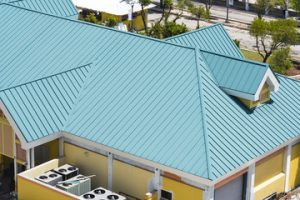Charleston Masonry Masters can breathe new life into your outdoor living spaces, enhancing both aesthetics and function. From repairing chimneys to building retaining walls, skilled brick and stone mason contractors can transform your property with timeless beauty that stands the test of time.
Masonry services include a range of tasks, including brickwork, stone masonry, and concrete masonry. Mason contractors use mortar to bind together bricks, stones, and concrete blocks in construction projects.

Cleaning and Sealing
Masonry is the construction technique that involves stacking bricks, stone blocks, and concrete blocks to create building structures. These materials are bound together with mortar, a mixture of cement, lime, sand, and water, which acts as glue to hold the structure together. The process of masonry involves several tasks, including installation, repair, and restoration of various elements like outdoor steps and brick walls.
Taking care of stone masonry is crucial for keeping it looking beautiful and functioning well. Regular inspections can help spot problems and address them before they worsen. In addition, cleaning and sealing will help protect your stone from the weather and other threats.
Repointing and tuckpointing are important masonry services that help restore the look of brick walls. Over time, the mortar between bricks can deteriorate, leading to cracks and other structural issues. Tuckpointing involves carefully removing and replacing damaged mortar with new mortar that matches the original color and texture of the bricks.
A sandstone or paver walkway is a great way to add an elegant touch to your home. These walkways will not only add to the curb appeal of your property, but they will also reduce the amount of mud, pebbles, and dirt that gets tracked into your house by foot traffic.
Whether you need repairs to your existing sandstone or paver walkway, or you’re looking for a contractor to build a new one for your home, we can help. Our team of expert masons has years of experience building and repairing stone walkways. We can create a custom design to match the style of your home.
Repairing Cracks and Cracked Bricks
Brick walls are a durable and elegant addition to any home, but over time, they can become damaged. Freezing and thawing, water damage, or even a shift in the foundation can cause cracks that weaken the structure of your home and create a safety hazard.
Depending on the type and extent of the damage, there are a few different solutions for repairing brick walls. Hairline cracks can be filled with mortar dyed to match, and larger cracks can be repaired by using a masonry chisel to widen the crack slightly and make it easier for new mortar to bond with the existing surface.
While it may be tempting to simply replace the damaged brick, this can be very costly and invasive. Instead, a professional can repair the mortar joints, preventing future cracking and strengthening the structure of your home.
Expert residential masonry contractors can transform your property with a wide range of stone and brick solutions. From front stairs to retaining walls, patios and walkways to fireplaces, and more. Brick and stone are highly resilient materials that offer lasting beauty and elegance to your property, and our skilled masons will work with you to craft the perfect hardscape design that meets your aesthetic preferences. Contact us today to learn more about our stone and brick solutions and schedule a consultation.
Repointing Bricks
If you notice crumbling bricks or loose mortar, it’s time to get your wall repointed. Repointing involves removing damaged mortar and replacing it with new mortar to prevent water infiltration, which can lead to external damage and internal problems like mold and structural collapse. Repointing also helps your brick structure look its best, while increasing its longevity and overall health.
Professionals understand the nuances of different types of brick and mortar, ensuring that your repointing is done correctly to maintain its integrity. This is especially important when restoring historic buildings, as the right materials will ensure that the structure retains its original character while providing necessary protection.
Repointing requires extensive planning, preparation, and attention to detail. First, you’ll need to carefully remove the existing mortar without damaging the brickwork. This is usually accomplished using hand tools such as a hammer and chisel, rather than power tools, to avoid breaking or chipping the brick’s hard fire-skin that protects its relatively soft core. Next, you’ll need to thoroughly rake the joints clean to a depth that is double the width of the joint. This will help the fresh mortar adhere to the existing brickwork.
You’ll then need to mix the new mortar and water to a consistency that is similar to peanut butter, and then work in small sections. You’ll need to protect the area from rainfall and freezing temperatures during the curing process, which can take up to a week.
Custom Work
Masonry can include a variety of materials, each with its own unique properties and construction methods. It’s important to work with a professional who understands these differences and can deliver the results you want. Look for contractors with extensive experience and a track record of quality work. They should also offer detailed proposals and quotes, including a breakdown of labor costs, so you can understand what you’re paying for.
Brick and stone masonry are two popular construction methods, each offering different aesthetics and functionality. Brick masonry uses bricks bonded together with mortar to create walls, fireplaces, and chimneys. This style offers a classic look and is ideal for both residential and commercial projects. Stone masonry, on the other hand, uses natural stones like granite, limestone, and sandstone to build patios, walkways, and retaining walls. It’s a highly durable material and can add an elegant and refined look to any property.
A reputable stone masonry contractor will be able to design custom structures that will complement the architecture of your property. They can also help you choose the right materials for your project, whether it’s brick, stone, or concrete. They can also repair damaged masonry structures to restore their original beauty and functionality.








